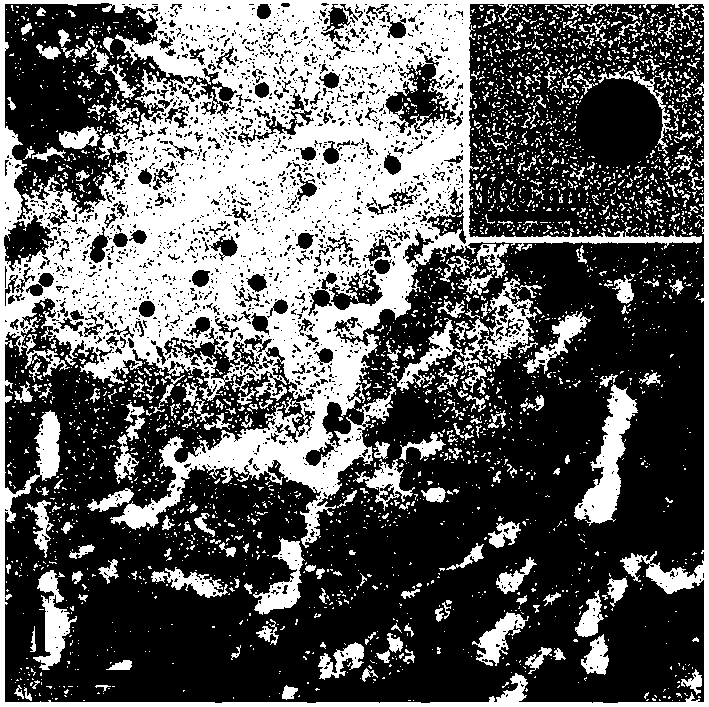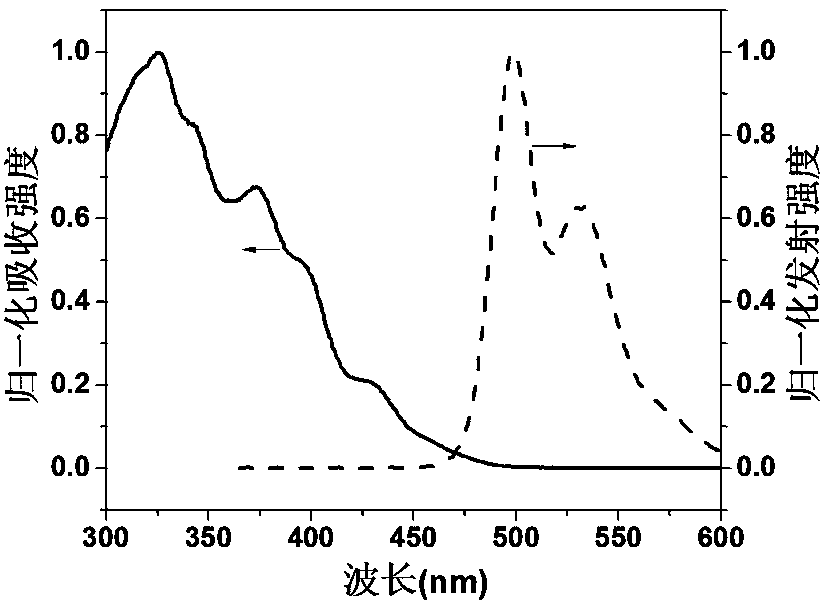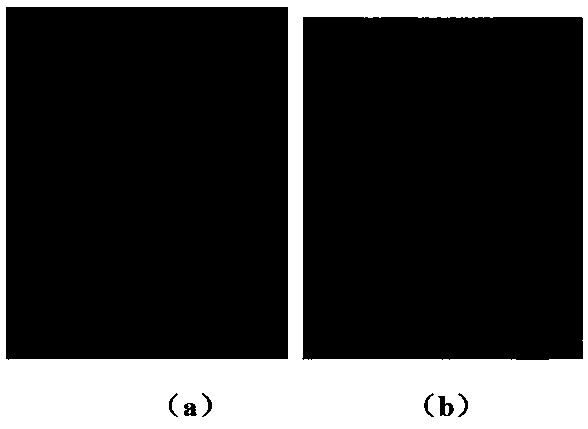Application of poly(p-phenylenevinylene)conjugated polymer fluorescent nanomaterials in latent fingerprint visualization
A technology of phenylene vinylene and fluorescent nanomaterials, which is applied in the fields of fluorescence/phosphorescence, material excitation analysis, etc., to achieve remarkable developing effect and simple operation
- Summary
- Abstract
- Description
- Claims
- Application Information
AI Technical Summary
Problems solved by technology
Method used
Image
Examples
Embodiment 1
[0025] This embodiment provides a method for developing fresh latent fingerprints on the adhesive surface of fingerprint tape with polymer fluorescent nanoparticle suspension, the specific steps are as follows:
[0026] 1. According to the technical scheme disclosed in the Chinese invention patent (CN104845052A), the poly(p-phenylene vinylene) precursor solution (pre-PPV) was prepared. Take 5 mL of the prepared pre-PPV and put it into a two-necked flask under anaerobic conditions, add 15 mL of deionized water to dilute, add 0.2003 g of sodium dodecylsulfonate SDS (0.0007 mol), raise the temperature to 50 °C, and wait for Sodium dodecylsulfonate was completely dissolved, and then 0.2 mL of triethylamine (0.0014 mol) was added as an elimination reaction catalyst, and the temperature was continued to 80 °C, and the reaction was continued for 3 h to obtain 18 mL of PPV nanoparticle suspension.
[0027] 2. Take 1 mL of the suspension prepared in step 1, add 4 mL of deionized water ...
Embodiment 2
[0035] 1. According to the technical scheme disclosed in the Chinese invention patent (CN104845052A), prepare poly-p-phenylene vinylene precursor solution (pre-PPV), take 5 mL into a 50 mL two-necked flask under anaerobic conditions, and then add 15 mL to Dilute with deionized water, add 0.2003 g sodium dodecylsulfonate SDS (0.0007 mol) to it, raise the temperature to 50°C to completely dissolve the SDS, then add 0.2 mL triethylamine (0.0014 mol) as a catalyst for the elimination reaction, and continue to raise the temperature To 80 ℃, continue stirring for 3 h to obtain 18 mL of PPV nanoparticle suspension; take 1 mL of the suspension, add 4 mL of deionized water to dilute to obtain a volume of 5 mL of developer, put it in a weighing bottle for later use .
[0036] 2. Store the fingerprint tape loaded with fingerprints at room temperature for 30 days, and then immerse in the developer solution for 5-10 minutes to ensure full contact between fingerprints and nanoparticles.
...
Embodiment 3
[0041] 1. According to the technical scheme disclosed in the Chinese invention patent (CN104845052A), the poly-p-phenylene vinylene precursor solution (pre-PPV) was prepared, and the reaction system was kept in an oxygen-free environment, and 5 mL of the precursor solution was added to 50 mL of Add 15 mL of deionized water to the two-necked flask for dilution, add 0.2003 g of sodium dodecylsulfonate SDS (0.0007 mol), raise the temperature to 50°C to completely dissolve the SDS, and then add 0.2 mL of triethylamine (0.0014 mol) As a catalyst for the elimination reaction, continue to heat up to 80 °C, and continue to stir for 3 h to obtain 18 mL of PPV nanoparticle suspension; take 1 mL of the suspension, add 4 mL of deionized water for dilution, and obtain a volume of 5 mL of developing solution, set Reserve in a weighing bottle.
[0042] 2. Completely immerse the yellow sealing tape with fresh fingerprints in the developer solution for 5-10 minutes to ensure full contact betwe...
PUM
| Property | Measurement | Unit |
|---|---|---|
| particle diameter | aaaaa | aaaaa |
| particle diameter | aaaaa | aaaaa |
Abstract
Description
Claims
Application Information
 Login to View More
Login to View More - R&D
- Intellectual Property
- Life Sciences
- Materials
- Tech Scout
- Unparalleled Data Quality
- Higher Quality Content
- 60% Fewer Hallucinations
Browse by: Latest US Patents, China's latest patents, Technical Efficacy Thesaurus, Application Domain, Technology Topic, Popular Technical Reports.
© 2025 PatSnap. All rights reserved.Legal|Privacy policy|Modern Slavery Act Transparency Statement|Sitemap|About US| Contact US: help@patsnap.com



